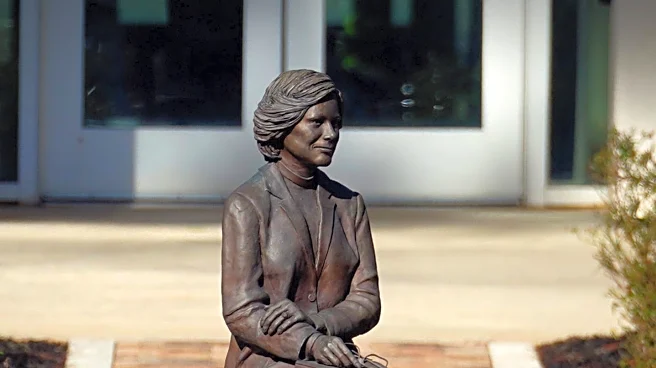What's Happening?
A classroom chant about private parts has gone viral on TikTok, featuring a teacher in Namibia leading first-graders in a call-and-response chant about body autonomy. The chant, which includes phrases like 'These are my private parts!' and 'Nobody can touch them!', has garnered millions of views. While some viewers find the approach too aggressive, child-safety experts argue that the assertive tone is crucial for teaching children about body boundaries. According to Cincinnati Children’s Hospital, using songs and chants helps children develop 'body safety scripts,' which are memorable phrases that empower them to assert ownership over their bodies and seek help if needed.
Why It's Important?
The viral chant highlights the importance of teaching children about body safety and autonomy in a way that is both engaging and memorable. Experts emphasize that assertive communication about body boundaries can help children feel more comfortable and confident in potentially unsafe situations. This approach challenges traditional, more subdued methods of discussing body safety, which may not adequately prepare children to assert themselves. By normalizing open discussions about body autonomy, the chant could contribute to reducing the risk of child abuse and exploitation, making it a significant tool for parents and educators.
What's Next?
Parents and educators are encouraged to adopt similar methods at home and in classrooms to reinforce the message of body autonomy. Experts suggest using real names for body parts and practicing assertive communication, such as saying 'No, thank you' or 'I don’t want a hug right now.' These practices aim to create a culture of open and confident communication about body safety, potentially leading to broader societal changes in how child safety is approached.
Beyond the Headlines
The chant also addresses cultural taboos surrounding discussions of body safety and sexual abuse prevention. In many cultures, these topics remain sensitive, but the viral moment underscores the need for change. By breaking the silence and encouraging open dialogue, the chant could pave the way for more comprehensive education on body safety, ultimately empowering children and saving lives.










